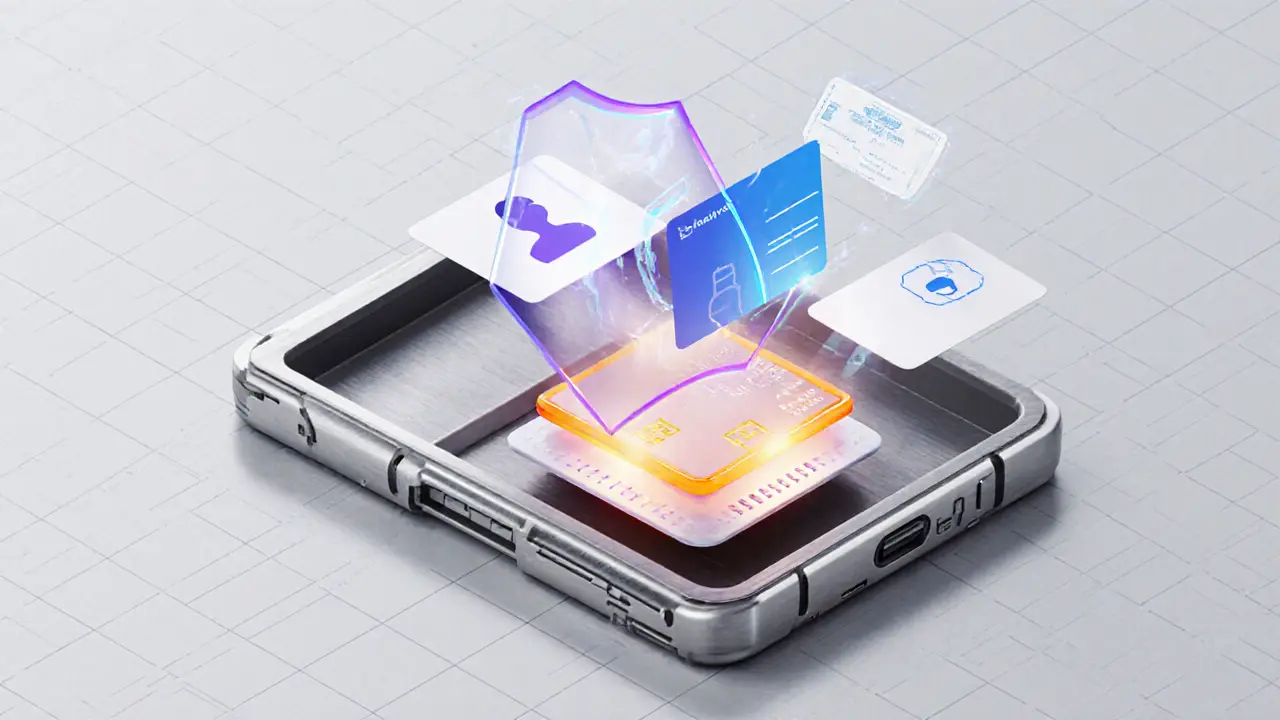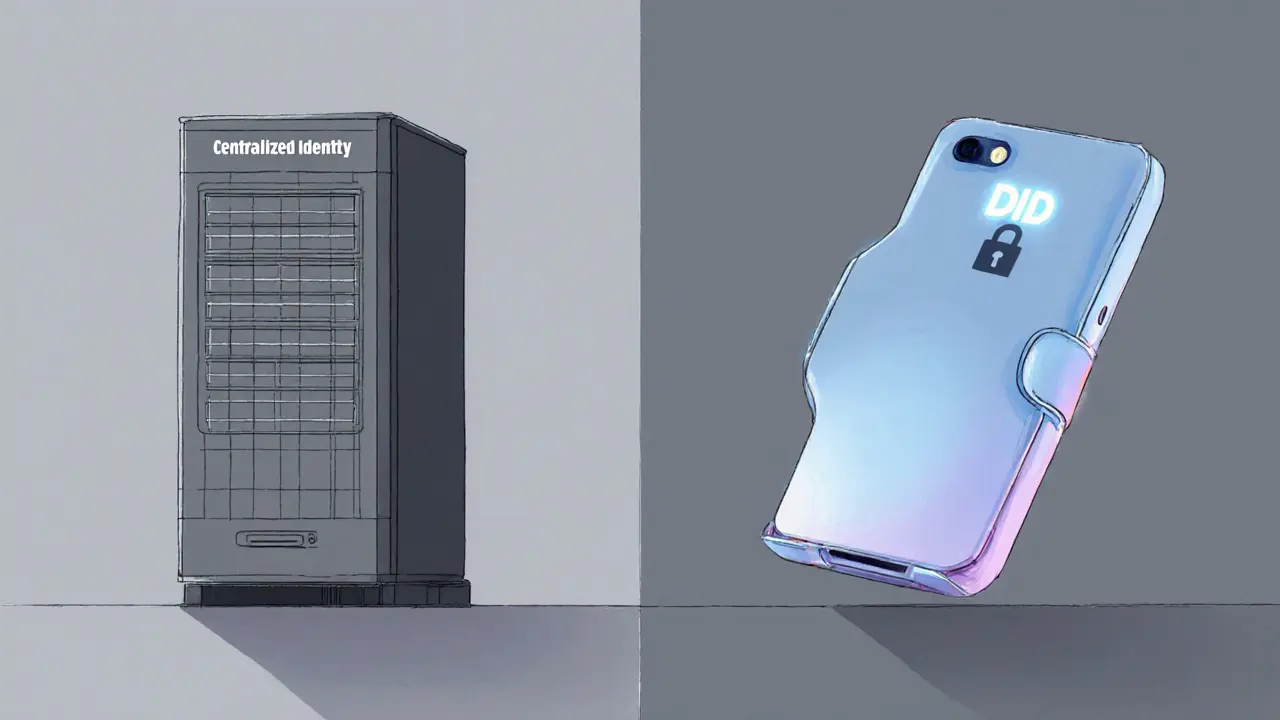Decentralized Identity Privacy Comparison Tool
Data stored in large databases controlled by corporations or governments. Single point of failure risks exposing millions of records.
Users have limited control over sharing; services often request full profiles.
User-controlled wallets store credentials off-chain. No central repository for personal data.
Selective disclosure enables proving claims without revealing underlying data.
| Feature | Centralized Identity | Decentralized Identity |
|---|---|---|
| Data storage | Large databases owned by corporations or governments | User-controlled wallets; credentials kept off-chain |
| Breaches impact | Single point of failure can expose millions of records | No single repository; breach of one wallet only affects that user |
| Control over sharing | Often all-or-nothing; services request full profile | Selective disclosure via zero-knowledge proofs |
| Auditability | Audit logs held by provider; users have limited visibility | Immutable DID documents on blockchain allow anyone to verify authenticity |
| Regulatory compliance | Provider responsible for GDPR, CCPA, etc. | Responsibility shifts to user; standards guide compliance |
Key Takeaway
In decentralized identity systems, personal data never leaves the user's device unless explicitly shared. Verifiers only receive cryptographic proofs of validity, not raw personal information.
This design eliminates the risk of massive data breaches and empowers users to control what they reveal about themselves.
The rise of decentralized identity is reshaping online privacy by letting people own and control their digital selves without a central gatekeeper.
Quick Take
- Decentralized Identity (DI) replaces central databases with cryptographic identifiers.
- Users store Verifiable Credentials in a personal Digital Wallet.
- Zero‑knowledge proofs enable selective disclosure of attributes.
- Privacy improves because verifiers check signatures, not query a giant data store.
- Challenges include interoperability, regulator alignment, and wallet security.
How Decentralized Identity Works
Decentralized Identity is a model where identity data lives with the user, not a corporate server. Three roles keep the system humming:
- Issuer: creates a cryptographically signed credential (e.g., a university diploma).
- Holder: receives the credential and stores it in a secure Digital Wallet on a phone or hardware device.
- Verifier: asks the holder to prove a claim without ever pulling the full record from a central repository.
This flow means the verifier only sees a proof that a credential is valid; the underlying personal data never leaves the holder’s device unless they intentionally share it.
Core Privacy Components
Decentralized Identifiers (DIDs) are unique strings-like did:example:123456789abcdefghi-that act as a user’s public address. A DID never contains a phone number, email, or name, so it doesn’t expose personally identifiable information (PII) by design.
Self‑sovereign Identity (SSI) is the philosophy that gives the holder full authority over issuance, storage, and sharing of credentials. SSI systems enforce privacy‑by‑design because the private key that controls a DID stays on the holder’s device.
Verifiable Credentials are digital certificates signed by an issuer’s private key. The holder can present them to a verifier, who checks the signature against the public key recorded in the DID document. The credential itself can be kept off‑chain, while the proof of authenticity lives on a blockchain.
Digital Wallets act like a secure vault in the user’s phone or a hardware token. They store private keys, DIDs, and credentials, encrypting everything at rest and requiring biometric or PIN authentication to unlock.
Zero‑knowledge proofs let a holder demonstrate a specific attribute-such as "over 21"-without revealing the exact birthdate. This selective disclosure is the cornerstone of privacy‑enhancing verification.
Cryptographic Foundations
The security backbone relies on public‑key cryptography. When a wallet generates a DID, it creates a key pair:
- Private key: never leaves the device; used to sign credentials and proofs.
- Public key: published on a blockchain in the DID document; anyone can verify signatures against it.
Zero‑knowledge proofs, such as zk‑SNARKs, add a layer where the verifier receives a proof that a statement is true without learning the underlying data. For example, a holder can prove they have a valid driver's license without showing the license number, address, or photo.

Privacy Benefits Over Centralized Systems
| Feature | Centralized Identity | Decentralized Identity |
|---|---|---|
| Data storage | Large databases owned by corporations or governments | User‑controlled wallets; credentials kept off‑chain |
| Breaches impact | Single point of failure can expose millions of records | No single repository; breach of one wallet only affects that user |
| Control over sharing | Often all‑or‑nothing; services request full profile | Selective disclosure via zero‑knowledge proofs |
| Auditability | Audit logs held by provider; users have limited visibility | Immutable DID documents on blockchain allow anyone to verify authenticity |
| Regulatory compliance | Provider responsible for GDPR, CCPA, etc. | Responsibility shifts to user; standards guide compliance |
Because each credential lives in the holder’s wallet, a data breach at a verification service does not expose the underlying personal data. The verifier only receives a cryptographic proof that the credential is valid.
Real‑World Use Cases
Governments are issuing national e‑IDs as DIDs, allowing citizens to prove residency without sending a full passport scan. Universities issue diploma credentials that alumni can share with employers. Employers, in turn, can verify a candidate’s degree without ever seeing the graduate’s full transcript.
In the financial sector, a bank can request proof of “credit score above 700” using a zero‑knowledge proof from a credit bureau, keeping the detailed score and transaction history private.
Challenges & Future Directions
Interoperability remains a roadblock. Different DID methods (e.g., did:ion, did:ethr) store documents on varied blockchains, making cross‑network verification complex. Standard bodies like W3C are working on universal schemas to smooth this out.
Regulators demand traceability for anti‑money‑laundering (AML) checks, which can clash with privacy‑by‑design. Hybrid solutions are emerging that combine on‑chain anonymized identifiers with off‑chain audit trails accessible only under legal order.
Advances in zero‑knowledge proof efficiency will reduce computation costs, making mobile wallets faster and battery‑friendly. As these proofs become lightweight, we’ll see more everyday apps-shopping, ridesharing, health-leveraging selective disclosure.
Next Steps for Practitioners
- Choose a DID method that aligns with your target ecosystem (e.g., Ethereum‑based DIDs for DeFi, ION for Microsoft‑backed solutions).
- Implement a wallet that securely stores private keys using secure enclaves or hardware security modules.
- Adopt verifiable credential schemas that map to industry standards (e.g., OpenBadge for education).
- Test zero‑knowledge proof libraries (such as zk‑SNARK or Bulletproofs) on real‑world data to measure performance.
- Stay informed about GDPR‑style regulations that may require data‑subject access to audit logs stored on‑chain.
Frequently Asked Questions
What is a Decentralized Identifier (DID)?
A DID is a globally unique, cryptographically verifiable identifier that does not contain personal data. It points to a DID document stored on a blockchain or distributed ledger, which holds the public key and service endpoints for the identifier.
How does selective disclosure protect my privacy?
Selective disclosure uses zero‑knowledge proofs to prove a claim (e.g., age over 18) without revealing the underlying attribute (exact birthdate). The verifier receives a mathematical proof that the claim is true, and nothing else.
Can I use Decentralized Identity on existing platforms like Facebook?
Integration requires the platform to accept verifiable credentials and verify DIDs. Some platforms have pilot programs that allow users to log in using a decentralized identity wallet, but wide adoption is still early.
What happens if I lose my digital wallet?
Most wallets provide a recovery phrase (typically 12‑24 words). Keeping this phrase secure lets you restore the wallet and all associated DIDs on a new device. Without it, the private keys are irretrievable and the credentials become inaccessible.
Are decentralized identity systems compliant with GDPR?
Because users control their data and can delete or revoke credentials, many DI implementations meet GDPR’s data‑subject rights. However, on‑chain DID documents are immutable, so designers often store only hashes or pointers that can be removed off‑chain to respect the right to be forgotten.

